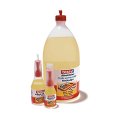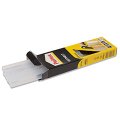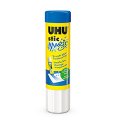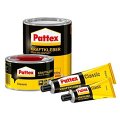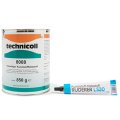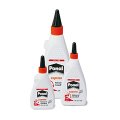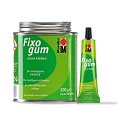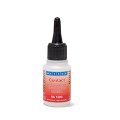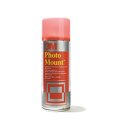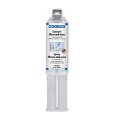2-Component Glues
Information about two-component adhesives
Applications: Highly stress-able, gap-bridging bonds require the use of two component glues which, after both components have been mixed together, will cure into a solid plastic. The two component glues which are based on epoxy resin are distinguished by their being especially good for use with metals.
Treatment: Resin and curing agent (hardener) – the names of the two components – must be mixed in the correct ratios so as to ensure that the full adhesive strength is attained. The apportioning can be done by eye in the case of small amounts but larger amounts (over 20 grams) should be done by weight. The limited working life (open time) requires that the adhesive mixture be made in a sufficient amount to complete the job at hand. During the curing process the glue gives off a great deal of heat – temperatures over 100 ºC can be reached and these can lead to deformations in thin plastic assembly pieces.
Important: Larger amounts of two component glues start to turn into gels sooner because the heat being produced accelerates the reaction. This can be redressed by doing the mixing in a flat bowl. The opposite is naturally also true: by heating the mixture with, for example, a hair dryer, the hardening time of two component glue is shortened. Care should be taken when reclosing the containers: the caps should not be interchanged because they will then glue shut.
